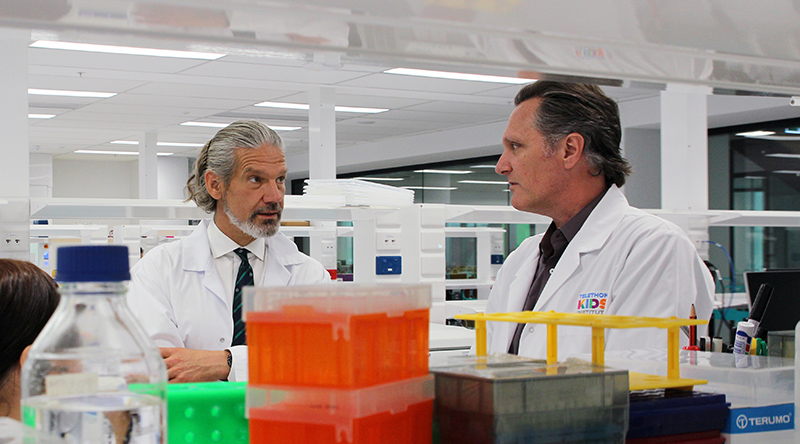Search

News & Events
BHP commits $2.6 million to research focused on stopping COVID-19 spreadResearchers from The Kids Research Institute Australia will lead a world first trial to test the effectiveness of the drug interferon in stopping outbreaks of COVID-19 by reducing the infectiousness of people who contract the virus.

News & Events
Sharing the power of data at TEDx PerthDr Hannah Moore was one of WA’s brightest minds chosen to speak at TEDX Perth in November last year, presenting her insights into the power of data in fighting infectious diseases to a sold-out crowd at the Perth Concert Hall.

News & Events
First week of school visits mark official launch of the SToP TrialThe The Kids Skin Health team has a busy six weeks ahead - visiting nine communities throughout the Kimberley region of WA as part of the first school surveillance activities for the SToP Trial.
Research
Immunization of newborns with bacterial conjugate vaccinesBacterial conjugate vaccines are based on the principle of coupling immunogenic bacterial capsular polysaccharides to a carrier protein to facilitate the...
Research
A randomized, controlled, phase 1/2 trial of a neisseria meningitidis serogroup B bivalent rLP2086 vaccine in healthy children and adolescentsFactor H binding protein (also known as LP2086) is a conserved outer membrane neisserial lipoprotein that has emerged as a strong candidate protein antigen...
Research
Comparison of three methods for the recovery of skin pathogens from impetigo swabs collected in a remote community of Northern Territory, AustraliaImmediate plating of impetigo swabs is the gold standard for bacterial recovery but is rarely feasible in remote regions.
Research
Safety and Immunogenicity of Neonatal Pneumococcal Conjugate Vaccination in Papua New Guinean Children: A Randomised Controlled TrialWe conducted an open randomized controlled trial in Papua New Guinea to compare safety, immunogenicity and priming for memory of 7-valent PCV (PCV7) given in...
Research
Acute Rheumatic Fever and Chronic Rheumatic DiseaseThis chapter describes the epidemiology, pathogenesis, clinical manifestations, diagnostic criteria, and management principles of acute rheumatic fever.
Research
Polymorphisms in key innate immune genes and their effects on measles vaccine responses and vaccine failure in children from MozambiqueDespite an effective vaccine, measles remains a major health problem globally, particularly in developing countries. More than 30% of children show primary...
Research
Prevalence of and risk factors for human rhinovirus infection in healthy aboriginal and non-aboriginal western australian childrenHuman rhinovirus (HRV) species C (HRV-C) have been associated with frequent and severe acute lower respiratory infections and asthma in hospitalized children.
